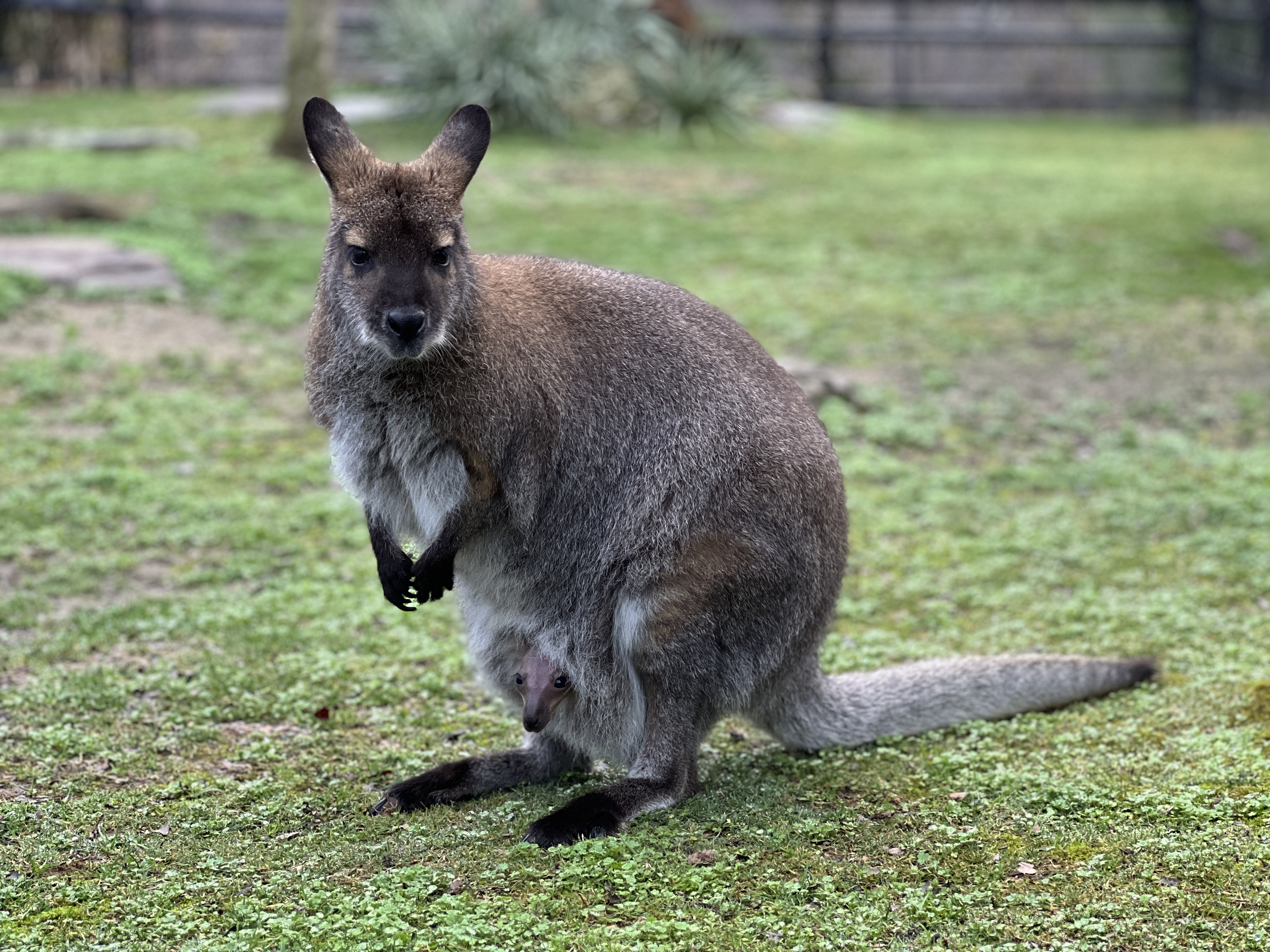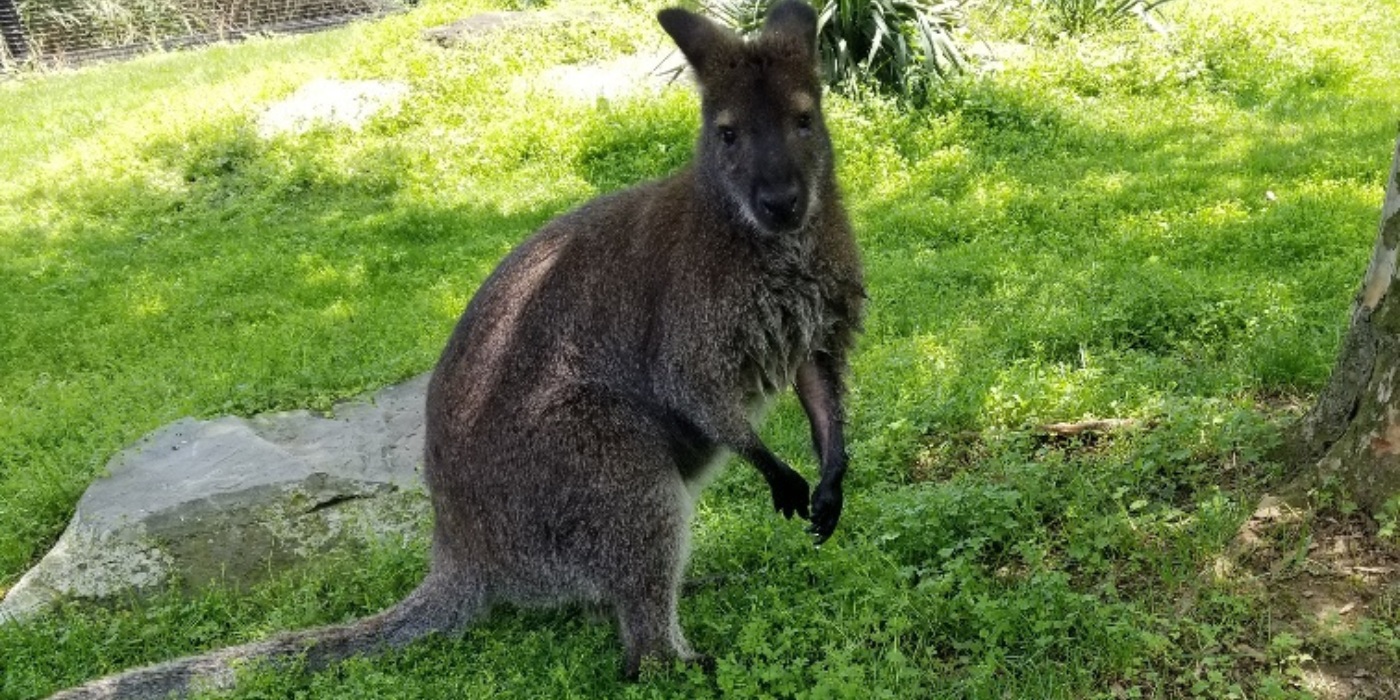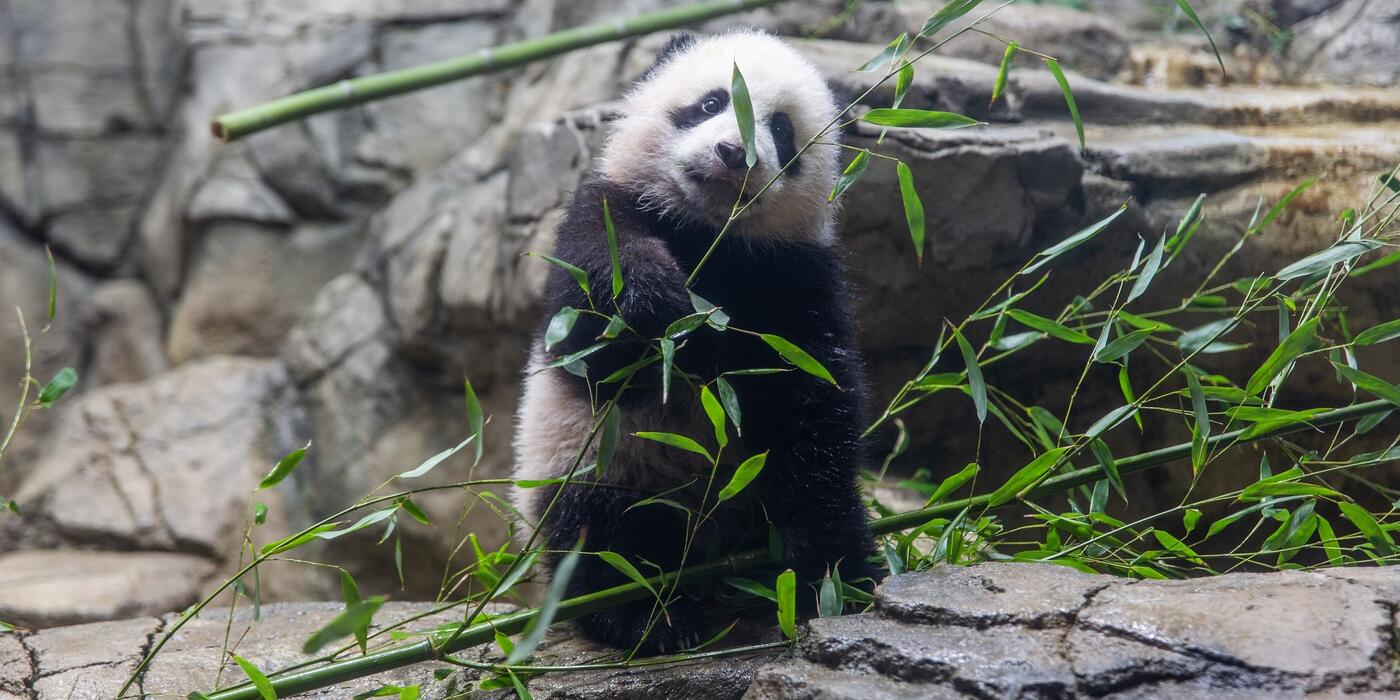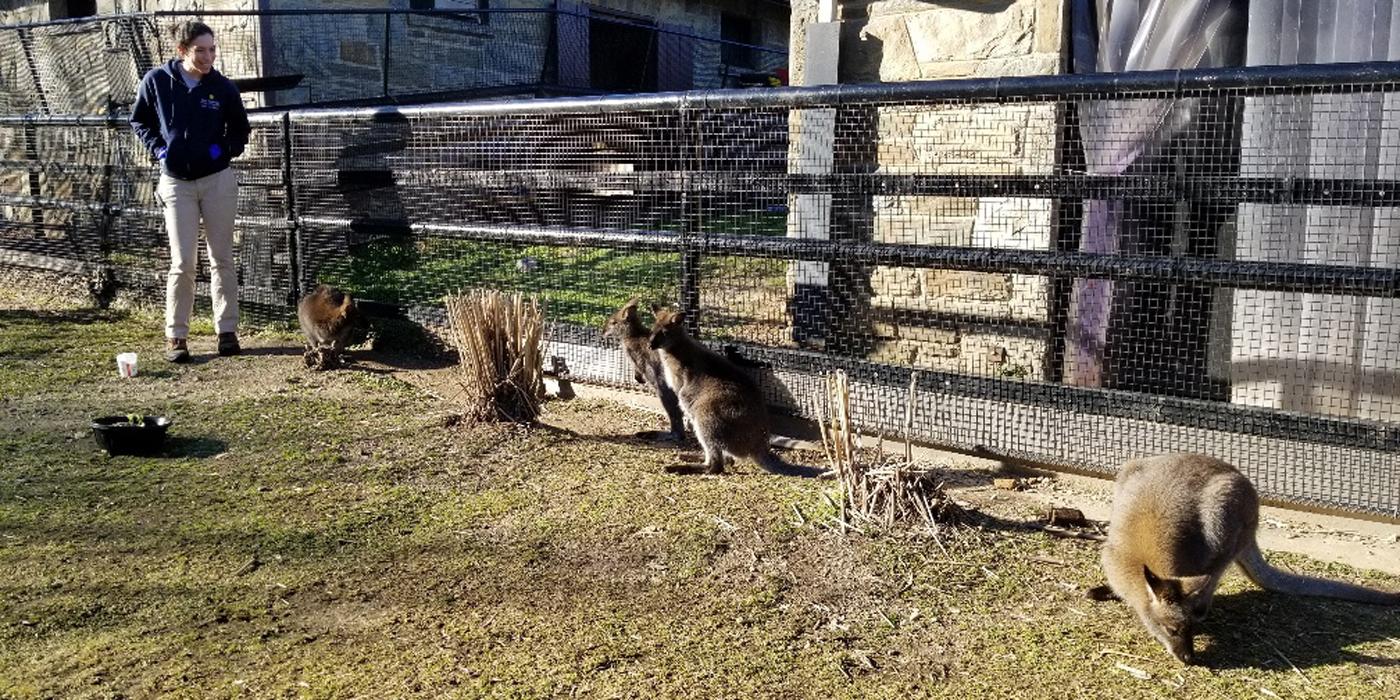Jumping for Joy: Meet the Zoo’s New Baby Wallaby
Unlike most mammals, marsupial babies—like koalas, kangaroos and the Bennett’s wallaby—spend the first several months of their lives inside their mother’s pouch. Tucked away on their mother’s belly, this pouch, or marsupium, provides a safe place for an infant to sleep, nurse and stay warm. In fact, youngsters typically don't emerge from the pouch until they are several months old.
Because of this ambiguity, staff had to rely on “wallaby math” to figure out when the yet-to-be-named baby Bennett’s wallaby was born at the Zoo’s Small Mammal House, said keeper Esther Wray.

Joeys spend the first several months of their lives inside their mother's pouch.
As of late April, the young wallaby, or joey, is starting to independently explore the wallaby habitat outside the Small Mammal House after leaving the pouch for the first time. The joey’s parents, 7-year-old female Victoria and 3-year-old Winton, paired up shortly after Winton arrived at the Zoo last summer. Marsupials have very short gestation periods: female Bennett’s wallabies are only pregnant for about 28 days. This means the joey was probably born on or around August 25, 2023, making the youngster around eight months old.
“When the joeys are born, they are the size of a jellybean. Without the safety of their mother’s pouch, they would never survive,” explained Wray. Once the newborn joey emerges from the mother’s birth canal, it crawls up into the mother’s pouch, where it will gain nourishment and continue to grow for several months.
The unique pouch expands as the joey gets larger. At around five and a half months, the joey will start to poke out its head and look around. But because the babies don’t have much fur, they don’t normally emerge for more than a few seconds at a time. The older and furrier it gets, the longer the joey will stick out its head, and eventually its forelimbs, said Wray.
“It will gradually start to sniff the ground and surrounding area, before it comes fully out of the pouch.”
As the joey gets older, it becomes more curious and starts to spend more time visible.
One Small Step
In mid-April, the joey took one small step for wallaby-kind: the youngster ventured outside of its mother’s pouch and began to explore its surroundings. Wray says usually the joeys tumble out somewhat accidentally--and never gracefully!-- but over time, the process gets smoother. After a week’s worth of practice, the joey has started to explore its surroundings independently and investigate objects in its exhibit area. After an extended period of bouncing around, the joey will hop back to mom’s pouch for a snack break and a nap.
Including the newborn, the Zoo is now home to four wallabies—the infant, Victoria, Winton and Addie, another female.
While wallaby mothers take on all the responsibilities of feeding, rearing and transporting their young, male wallabies don’t play much of a role, if any, in raising the joey.
The yet-unnamed joey is starting to venture outside of mom Victoria's pouch. Dad Winton watches nearby.
After about ten months, when the joey is no longer going into Victoria’s pouch, the Zoo’s veterinary team will conduct the infant’s first health exam. In addition to making sure the infant is generally healthy, the team will determine the sex of the joey and give it a name. And once the joey is no longer reliant on its mom, it will be time to determine the next moves for the young marsupial. Wray says the joey will probably transfer to another zoo to join another wallaby group, or mob, just like its two half-sisters.
Keepers are curious to see the joey’s personality develop. The youngster may take after Victoria—who keepers describe as smart, spicy and maternal—or after Winton, who is more reserved and attentive.
“The only time Winton isn’t overly cautious or flighty is when he hears one of the girls grumble,” Wray explains, adding that grumbling is the sound wallabies make to express displeasure. “If he hears it, he will usually come and investigate what has made them upset.”
Keep Wallabies Wild
Although this joey looks cute and cuddly, Wray advises people against trying to keep wallabies as pets.
“They have very specific dietary requirements and need a lot of space,” she said. “They are also not the cleanliest of creatures.”
Instead, you can see the whole mob, including the joey, in their exhibit area behind the Small Mammal House. Wray suggests visitors plan their visit to arrive earlier in the morning, when the mob is the most active. Although the joey is starting to venture out of the pouch more, it is never very far away from mom. The most likely places to spot the joey are either near Victoria or inside her pouch.
Related Species:



